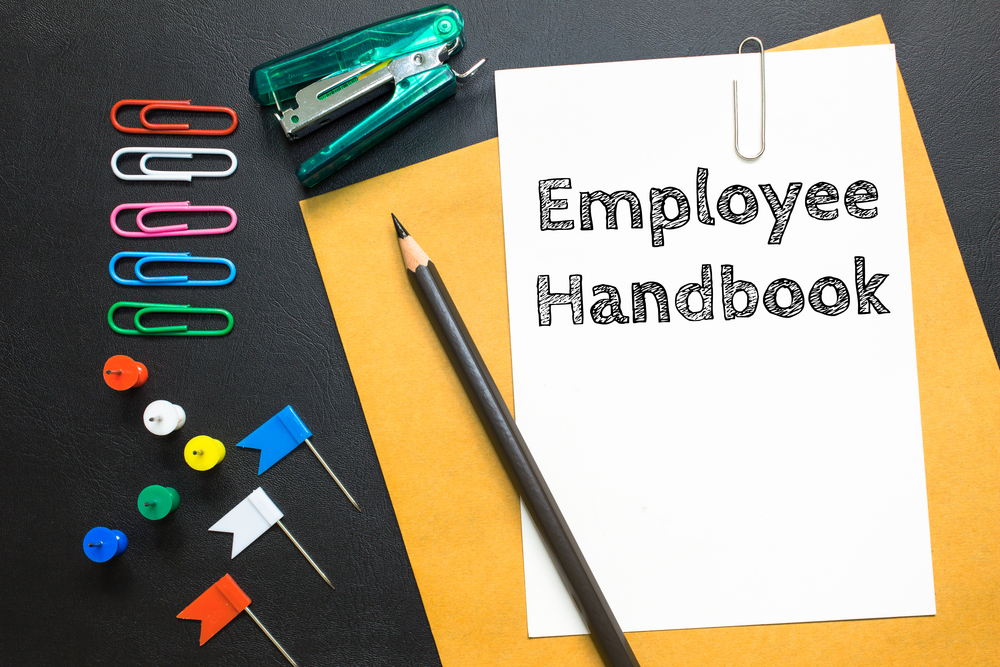An effectively written employee handbook protects the both the employee and the employer by providing clear, concise terms and expectations on both sides. When done right, this useful HR tool can serve several important functions.
Here are some key things a well-written employee handbook can do for your business:
- Clarify organizational policy
- Answer common employee questions
- Save your HR staff time and headaches
- Highlight your employee benefits and perks
- Address legal obligations and employee rights
- Help make sure your company is in compliance
- Reinforce company values, mission, and culture
- Properly set employer and employee expectations
- Provide a common set of rules and accountability for everyone
- Make new team members feel good about joining your organization
Who wouldn’t want to put together a document that can do all this?
Plenty of people, actually. It’s not that they don’t want to do it. It’s just that many people aren’t sure how to make it happen, so they get stuck.
How to get started
Putting together a top-notch employee manual may sound overwhelming, but it might not be as hard as you think.
If you have a current handbook, start there. Revisit the content to see what information is outdated and what parts are still a good fit with your current processes, systems, culture, and vision. As you evaluate your existing content, keep an eye out for anything that is missing or needs to be added.
If you don’t have a current handbook, there are resources to help. Employee handbook builders can be a great way to get started. If you don’t know where to find these kinds of tools, talk with your employee benefits broker, commercial insurance agent, or employment law attorney. Anyone in your circle of trusted business advisors should be able to point you in the right direction.
What should be included
What kinds of things should you be looking out for? Here’s a list of common things to include in an employee handbook:
- Code of conduct and behavior expectations
- Compensation, timekeeping, and payroll
- Attendance and remote work
- Employee benefits and perks
- Paid holidays, vacation, and time off
- FMLA and employee leave
- EEO and anti-discrimination
- Anti-harassment and anti-retaliation
- Workplace safety and security
- Technology
- Social media
- Data privacy
- Employee wellbeing and/or assistance
- Dress code and appearance standards
- At-will disclaimers (as applicable)
- Acknowledgement of receipt (signature page)
Because every organization is different, you will want to base your exact content on your own unique business model and situation. To make sure all of your bases are covered, have an attorney review your manual before you consider it complete.
Keys to employee handbook success
Your employee handbook can be a powerful document in your business tool box. To maximize its effectiveness, you’ll want to follow a few basic guidelines.
Stay true to your brand – Your employee manual should be consistent with your company voice and values.
Stay away from industry jargon – Use language that is clear and easy to understand.
Pay attention to spelling, punctuation and grammar – Don’t leave any room for confusion.
Format your handbook for easy reading - Use plenty of section headers, bullet points, and paragraph breaks.
Keep it simple - Your employees don’t want to read a novel, and you don’t want them skimming over important information.
Keep it up to date - Set aside time each year to review and update your employee handbook.
Ask an expert - Have your attorney look over the final draft to make sure it has everything that needs to be included and nothing that shouldn’t be.
Once you’ve put together an employee handbook you are proud of, don’t just admire your work of art. Make sure it gets in the hands of everyone on your team so it can fulfill its many missions. Your organizational leaders, your HR department, and your happy employees will all appreciate it.
Content provided by Q4iNetwork and partners
Photo by OoddySmile Studio
